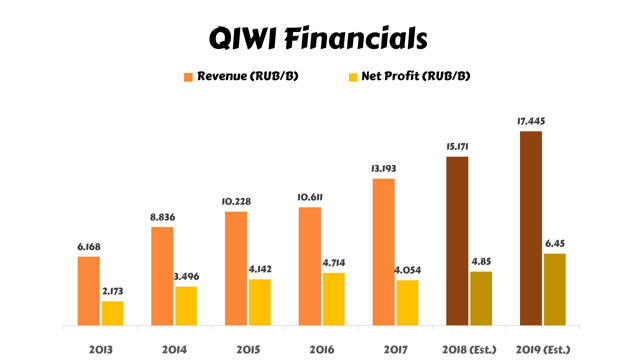China has moved&a;nbsp;&l;strong&g;down&l;/strong&g;&a;nbsp;tariffs on auto and auto parts imports. And a source this past week said the government has &a;ldquo;encouraged&a;rdquo; China&a;rsquo;s largest oil refiner to buy more U.S. crude oil. Based on the reports, China is now taking about&a;nbsp;&l;strong&g;8 times&l;/strong&g;&a;nbsp;the daily volume of U.S. crude imports, compared to averages a few months ago.
These are concessions! This is a distinct power shift. Not long ago, the world was afraid to rattle the cage of China. They (global trading partners) tiptoed around touchy matters like Chinese currency manipulation&a;nbsp;&l;strong&g;prior&l;/strong&g;&a;nbsp;to the global financial crisis a decade ago, and even more so&a;nbsp;&l;strong&g;after&l;/strong&g;&a;nbsp;the crisis.
But now, you can see the leverage that has been created by Trump. This is exactly what we talked about the day after the election.
&l;a href=&q;https://esp.forbes.com/subscribe?PC=F5&a;amp;PK=R8526&a;amp;mkt_tok=eyJpIjoiTmpZd1l6UTNZV1ZsWWpVeSIsInQiOiIzY1c2MXFET3ZYZUI2c1BrQ1RvQWxmR1NYVnljajZFY2dTbFY3RzJvd2xSNnpnMmVtTmxoXC83RlppQnhFXC9WQ3pOeGh1eStrNnN0XC9veUcyb0EzaFwvS0IyNnVPNHFHa1VHSmVrSkk3YVJkUnp0ZG14aFJ5TG83dWxCbmpzNGFhRVoifQ%3D%3D&q; target=&q;_blank&q;&g;Special Memorial Day Offer: One Month Free Of Forbes Billionaire&s;s Portfolio&l;/a&g;
Here&a;rsquo;s an excerpt from my November 9, 2016&a;nbsp;&l;em&g;&l;span class=&q;il&q;&g;Pro&l;/span&g;&a;nbsp;&l;span class=&q;il&q;&g;Perspectives&l;/span&g;&a;nbsp;&l;/em&g;note, back when the experts were predicting Draconian outcomes for poking the China giant: &a;ldquo;As we&a;rsquo;ve seen with Grexit and Brexit, the votes came with dire warnings, but have resulted in creating&a;nbsp;&l;strong&g;leverage&l;/strong&g;. Trump&a;rsquo;s complaints about China are right. And a threat of slapping a tariff on Chinese goods creates&a;nbsp;&l;strong&g;leverage&l;/strong&g;&a;nbsp;from which to negotiate.&a;rdquo;
Now, we have an economy that is leading the global economic recovery. China wants and needs to be part of it. And we have a President that has a loud bark, and the credibility to bite. And that is creating movement. Let&a;rsquo;s revisit, also from one of my 2016 notes, why this China negotiation is so important &a;hellip;
&l;em&g;TUESDAY, SEPTEMBER 27, 2016&l;/em&g;
&l;em&g;China&a;rsquo;s biggest and most effective tool is and always has been its currency. China ascended to the second largest economy in the world over the past two decades by massively devaluing its currency, and then pegging it at ultra-cheap levels.&l;/em&g;
&l;em&g;Take a look at this chart &a;hellip;&l;/em&g;
&l;em&g;&l;img class=&q;CToWUd a6T&q; src=&q;https://blogger.googleusercontent.com/img/proxy/AVvXsEijaAR6Juy2OrFJiczssEGqi2tv50YUoGpfoUD6WuNcJVMa0WNSQD5xXEXzXPcV8S4g49ykSAO0-J18D3mDqklQQ_AZJplhudHovL_lSvv3y58P5-oL52MFCdmPxJojz6ScaUubW0uQWsx8-Klv5ViMwTbgPYRQCCQPVDdqE5ZFDBQjq_o=s0-d-e1-ft&q; alt=&q;&q; border=&q;0&q; data-height=&q;244&q; data-width=&q;420&q;&g;&l;/em&g;
&l;em&g;In this chart, the rising line represents a weaker Chinese yuan and a stronger U.S. dollar. You can see from the early 1980s to the mid-1990s, the value of the yuan declined dramatically, an&a;nbsp;&l;strong&g;82% decline against the dollar&l;/strong&g;. China trashed its currency for economic advantage&a;mdash;and it worked, big time. And it worked because the rest of the world stood by and let it happen.&l;/em&g;
&l;em&g;For the next decade, the Chinese pegged its currency against the dollar at 8.29 yuan per dollar (a dollar buys 8.29 yuan).&l;/em&g;
&l;em&g;With the massive devaluation of the 1980s into the early 1990s, and then the peg through 2005, the Chinese economy exploded in size. It enabled China to corner the world&a;rsquo;s export market, and suck jobs and foreign currency out of the developed world. This is precisely what Donald Trumpis alluding to when he says &a;lsquo;China is stealing from us.&a;rsquo;&l;/em&g;
&l;em&g;China&a;rsquo;s economy went from $350 billion to $3.5 trillion through 2005, making it the third largest economy in the world.&l;/em&g;
&l;em&g;&l;img class=&q;CToWUd a6T&q; src=&q;https://blogger.googleusercontent.com/img/proxy/AVvXsEhVU99xzFPEFv3F89BcLeAarF5py0xmwVU-PZqatEofOqc9b0XddFQWvBIYrp8ClLwQvXJEqGet3Nus-2BBG4yFQj-VIggPidw_TsEnfVcWxwpksbuQsGdiY7-wv7JBkUp5hWBpKpT6d1T6xAe8_0UdTr6t113xo-KRXGZUQvQGLWnwQ1E=s0-d-e1-ft&q; alt=&q;&q; border=&q;0&q; data-height=&q;244&q; data-width=&q;420&q;&g;&l;/em&g;
&l;em&g;This next chart is U.S. GDP during the same period. You can see the incredible ground gained by the Chinese on the U.S. through this period of mass currency manipulation.&l;/em&g;
&l;em&g;&l;img class=&q;CToWUd a6T&q; src=&q;https://blogger.googleusercontent.com/img/proxy/AVvXsEjGGiGhnNPIP0pWMUuyt4X3usCexcb_P8j0dRyd7W3YLEwXRTNhcLlyfhqMjyR-OMn_pjNFdF_RVvf4hqDhhNmr8tpN3ZOAwISjqPrFdOBEowBuGJ6rqLkcKGxK7Qcw-pUKlHre_OBusJJq-Z8BZfpfcUo9Gutjue6OboUFOVP8XyuZDns=s0-d-e1-ft&q; alt=&q;&q; border=&q;0&q; data-height=&q;244&q; data-width=&q;420&q;&g;&l;/em&g;
&l;em&g;And because they&a;rsquo;ve undercut the world on price, they&a;rsquo;ve become the world&a;rsquo;s Wal-Mart (sellers to everyone) and have accumulated a mountain for foreign currency as a result. China is the holder of the largest foreign currency reserves in the world, at more than $3 trillion dollars (mostly U.S. dollars). What do they do with those dollars? They buy U.S. Treasurys, keeping rates low, so that U.S. consumers can borrow cheap and buy more of their goods&a;mdash;adding to their mountain of currency reserves, adding to their wealth and depleting the U.S. of wealth (and the cycle continues).&l;/em&g;
&l;em&g;This is the recipe for big trade imbalances &a;mdash; lopsided economies too dependent upon either exports or imports. And it&a;rsquo;s the recipe for more cycles of booms and busts &a;hellip; and with greater frequency.&a;rdquo;&l;/em&g;
Again, China has to be dealt with. And we&a;rsquo;re starting to see signs of progress on that front. Good news.
&l;em&g;If you are hunting for the right stocks to buy and need some help navigating the changing investing environment,&l;span&g;&a;nbsp;&l;/span&g;&l;strong&g;&l;span&g;&l;a id=&q;m_-4108105136262460751&q; href=&q;http://pages.forbes.com/o03DB00NS00vkS1aDVNjtD2&q; target=&q;_blank&q; rel=&q;noopener noreferrer&q; target=&q;_blank&q;&g;join me&l;/a&g;&l;/span&g;&l;/strong&g;&l;span&g;&a;nbsp;&l;/span&g;in my&l;strong&g;&l;span&g;&a;nbsp;&l;/span&g;Forbes Billionaire&s;s Portfolio&l;/strong&g;.&a;nbsp;&l;span&g;We&l;/span&g;&l;span&g;&a;nbsp;have a roster of 20 billionaire-owned stocks that are positioned to be among the biggest winners as the market recovers.&a;nbsp;&l;/span&g;&l;/em&g;
&l;!--donotpaginate--&g;&l;/p&g;






 LSV Asset Management cut its stake in shares of Sandy Spring Bancorp Inc. (NASDAQ:SASR) by 3.4% in the 1st quarter, Holdings Channel reports. The fund owned 92,100 shares of the bank’s stock after selling 3,200 shares during the quarter. LSV Asset Management’s holdings in Sandy Spring Bancorp were worth $3,569,000 as of its most recent filing with the Securities & Exchange Commission.
LSV Asset Management cut its stake in shares of Sandy Spring Bancorp Inc. (NASDAQ:SASR) by 3.4% in the 1st quarter, Holdings Channel reports. The fund owned 92,100 shares of the bank’s stock after selling 3,200 shares during the quarter. LSV Asset Management’s holdings in Sandy Spring Bancorp were worth $3,569,000 as of its most recent filing with the Securities & Exchange Commission.